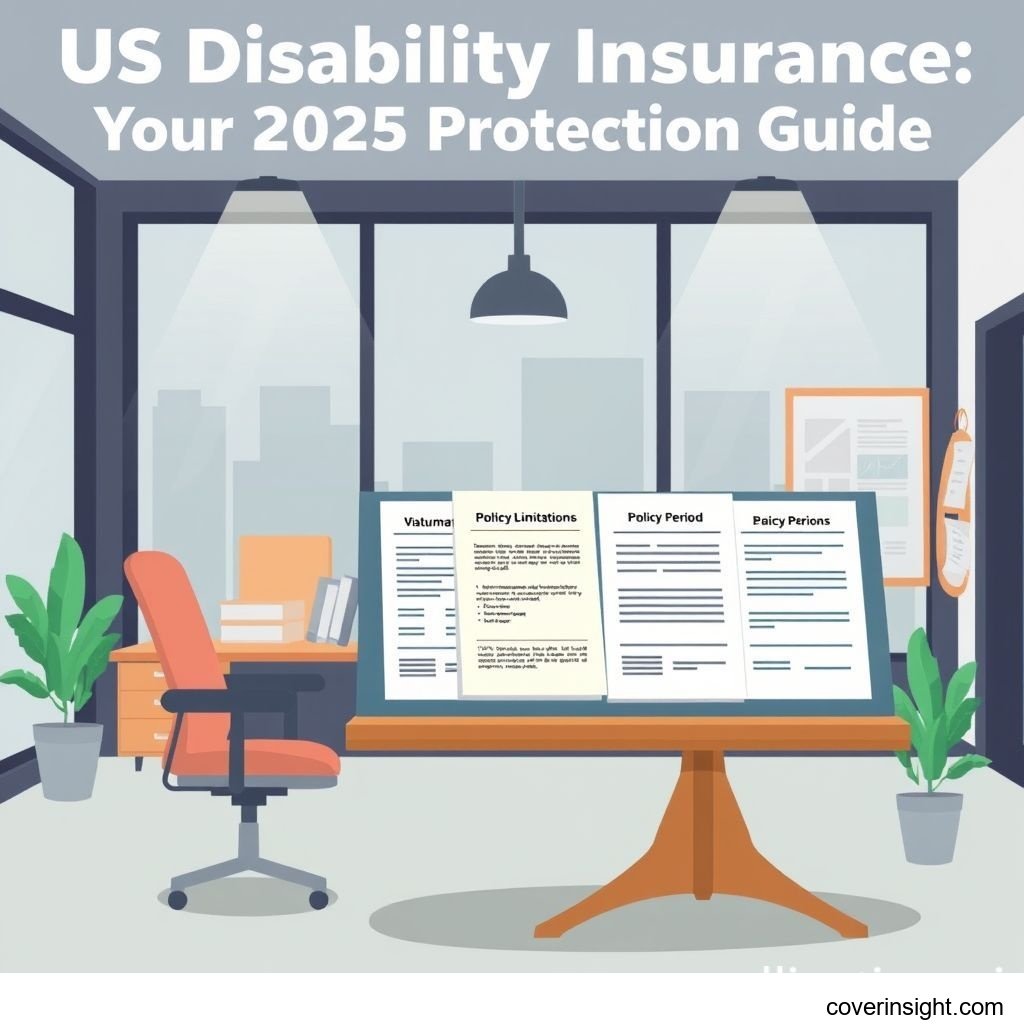Introduction
Navigating the landscape of US disability insurance in 2025 can feel like deciphering a complex puzzle, but understanding its core components, especially the waiting period options, is paramount. These periods, often referred to as elimination periods, dictate how long you must wait after an injury or illness before your benefits kick in. Choosing the right waiting period is a critical decision, directly impacting both your monthly premiums and your financial security during a time of need. It's not just about having coverage; it's about having the right coverage that aligns with your personal financial cushion and risk tolerance. For many, disability insurance is a cornerstone of a robust financial safety net, providing a vital income stream when you can no longer work due to a covered disability.
Coverage Details
What’s Included
A comprehensive disability insurance policy is designed to replace a significant portion of your income if you become unable to work due to illness or injury. Typically, this includes coverage for a wide range of conditions, from physical ailments like a severe back injury to mental health conditions that prevent you from performing your job duties. Policies often define "disability" in two ways: "own occupation" (you can't perform your specific job) or "any occupation" (you can't perform any job you're reasonably suited for). The benefit amount, usually 60-80% of your pre-disability income, is paid monthly after your chosen waiting period options have passed. For instance, if you select a 90-day elimination period, benefits would start on the 91st day of your disability. Many policies also include rehabilitation benefits to help you return to work and partial disability benefits if you can work part-time but not full-time.
Consider a real-world scenario: Sarah, a marketing manager in Cleveland, OH, suffered a debilitating stroke in late 2024. Fortunately, she had a long-term disability policy with a 60-day elimination period. After two months, her benefits began, providing 65% of her monthly income. This crucial support allowed her to focus on recovery without the added stress of immediate financial collapse, demonstrating the profound impact this coverage can have.
Common Exclusions
While disability insurance offers a robust safety net, it's essential to be aware of common exclusions. Most policies will not cover disabilities resulting from pre-existing conditions if not properly disclosed or if they manifest within a specific timeframe after policy inception (the "look-back period"). Disabilities arising from acts of war, self-inflicted injuries, or those sustained while committing a felony are also typically excluded. Certain high-risk activities or occupations might be excluded or require a special rider for coverage. It’s always wise to read the fine print, perhaps by reviewing resources from the National Association of Insurance Commissioners, to understand what your specific policy does and does not cover.
Cost Analysis
Price Factors
The cost of disability insurance, or your premiums, is influenced by several factors, with the waiting period options playing a significant role. A shorter waiting period (e.g., 30 or 60 days) means you'll pay higher premiums because the insurer is likely to pay out sooner. Conversely, opting for a longer waiting period (e.g., 90, 180, or even 365 days) can substantially reduce your monthly cost. Your age, health (including medical history and current conditions), occupation (riskier jobs cost more), and the benefit amount and period (how long benefits are paid) are also key determinants. For example, a healthy 30-year-old accountant will typically pay less than a 50-year-old construction worker for similar coverage. The benefit period, which dictates how long you receive payments (e.g., 2 years, 5 years, to age 65), also directly impacts the premium.
Saving Tips
Want to trim down your disability insurance costs without sacrificing essential protection? One of the most effective strategies is to choose a longer waiting period. If you have a solid emergency fund (say, 3-6 months of living expenses) that can bridge the gap, you can comfortably opt for a 90-day or even 180-day waiting period, significantly lowering your premiums. Additionally, maintaining good health, quitting smoking, and exploring group policies offered through your employer can lead to savings. Many employers offer basic disability coverage as part of their benefits package, which can be a good starting point, though often limited. Consider a "hybrid" approach: secure a base policy, and if you need more comprehensive coverage, add a supplemental individual policy. For more insights on financial planning and insurance, you might explore various Insurance Resources Global.
FAQs
How much do waiting period options cost? The specific cost difference depends on the insurer, your age, health, and other policy details, but generally, moving from a 30-day to a 90-day waiting period can reduce your premium by 10-20%, while opting for a 180-day period could save you 20-30% or more compared to a 30-day period. It's a trade-off between immediate access to funds and lower upfront costs.
What affects premiums? Premiums are influenced by your age, current health and medical history, occupation, the benefit amount you choose, the benefit period (how long payments last), and crucially, your selected waiting period options.
Is it mandatory? No, disability insurance is generally not mandatory in the US, unlike auto insurance in most states. However, for most working individuals, it's a highly recommended component of personal financial planning, providing protection against unforeseen loss of income.
How to choose? When choosing a policy, assess your financial obligations, emergency savings, and the typical length of short-term disability (many injuries resolve within 90 days). If you have robust savings, a longer waiting period might be suitable. For a deeper dive into personal insurance needs, consider visiting US Insurance Home. You can also compare plans and understand state-specific nuances by checking with your State Insurance Departments.
Consequences of no coverage? Going without disability insurance can have dire financial consequences if you become unable to work. You could deplete your savings, accrue significant debt, rely on family support, or even face bankruptcy. Social Security Disability Insurance (SSDI) exists, but it has strict eligibility requirements, a five-month waiting period, and benefits are often modest, with over 60% of initial applications being denied according to the Social Security Administration's 2023 data. This stark statistic underscores why individual coverage is so vital. It’s a reality check: your most valuable asset is often your ability to earn an income.
Author Insight & Experience:
As someone who's navigated the complexities of personal finance and seen firsthand the fragility of income streams, I can't stress enough the importance of disability insurance. Based on my experience, many people focus intensely on life insurance or health insurance but overlook the immediate, critical need to protect their earning potential. It's not just about a catastrophic accident; minor injuries or chronic illnesses, like severe back pain or debilitating migraines, can put you out of commission for months. Having those waiting period options ironed out before a crisis hits offers an immense sense of security. It’s a peace of mind that truly pays dividends when you’re facing the unexpected.







Comments